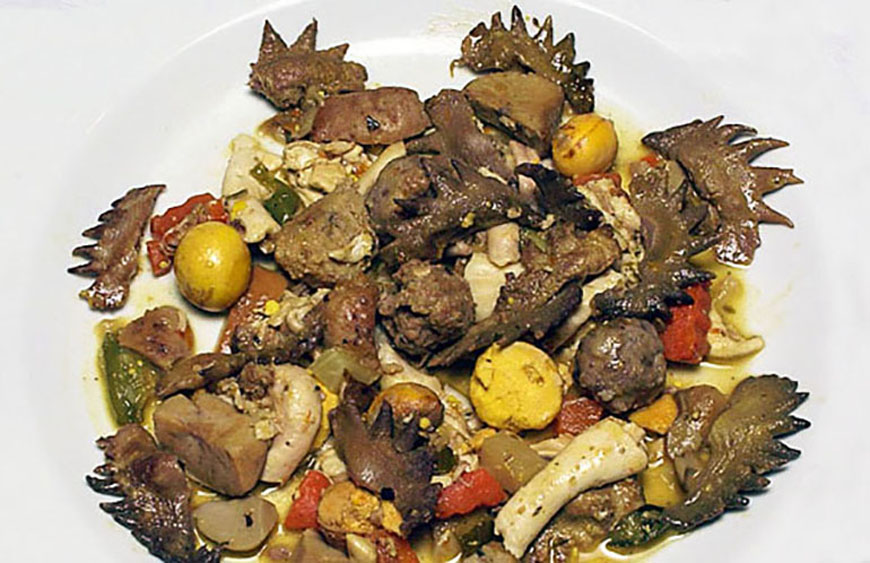Recipes
The Cavour finanziera

Roast in a large pan the butter, the filet cut in thin slices and tied into knots and the kidney.
After having browned add some broth.
Cook on the side, singularly and after having floured, the round meat rolled into small round balls, the filoni (calf giblets), the calf brain, the lacetto (pork giblets), the chicken crests, the chicken liver, the pork liver, some peas and cep mushroom preserved in oil.
As each ingredient cooks put it into the pot where you previously kept the kidney and the knots, adding from time to time some Barolo or Barbaresco wine.
Make sure the sauce becomes thick and before serving add a tablespoon of vinegar and two tablespoons of Marsala.
Keep some pieces of calf brain and filoni (calf giblets) on the side to garnish the dish before serving.
“Finanziera alla Cavour”, common name given to this dish takes us far from our area and closer to our days.
The name “financier” was given to the dish because in the exclusive and famous Cambio restaurant in Turin, it was served to special guests belonging to the local financial officers who particularly enjoyed the dish and was therefore called “the dish of the important financiers”, “alla Cavour” has been added to the name because among those guests, Cavour became one of the most important and the restaurant frequently served him this dish.
We still call this dish as the olden days, even if the Finanziera from Alba is slightly different from the one usually served in the important restaurants.
This depends from the ingredients that make up the dish which are first-choice local products, in particular the meat and Barolo wine that makes the sauce.
This gives a refined fragrance and taste that is unique and of rare delicacy, that deserves to be eaten slowly with no rush.
